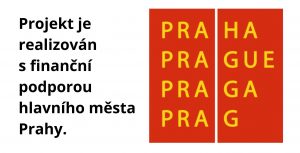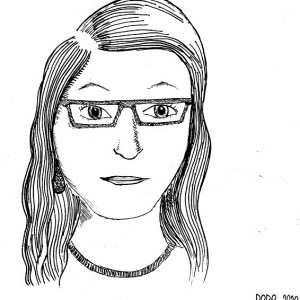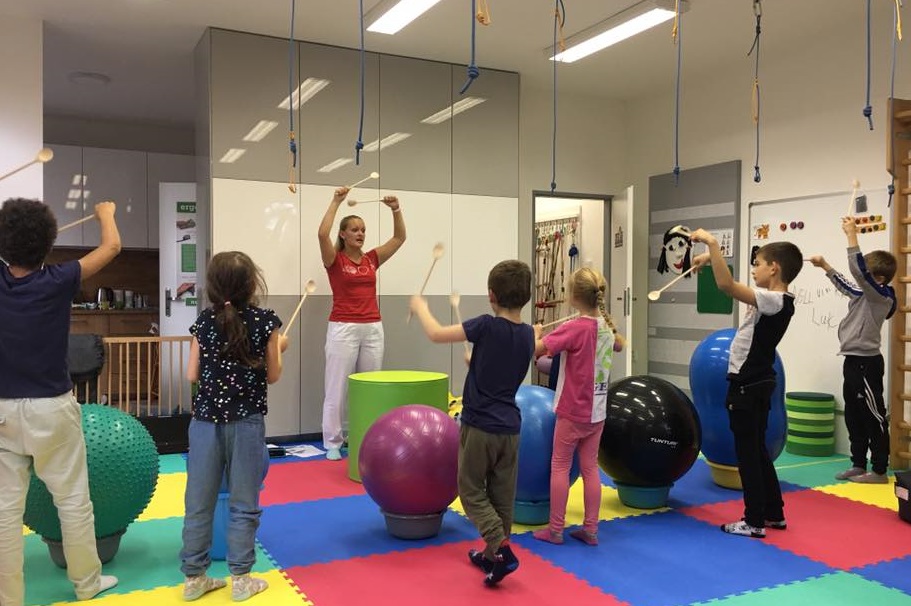Did you think that ergotherapy means stringing beads and creating collages? This is how you can meet this discipline in Czech stationaries and mental hospitals. The primary therapeutic approach used by the ergo therapist Mgr. Petra Dvorakova is a scientifically acknowledged method called Sensorics integration. Yet, not long ago, Katerina Thorova of NAUTIS told the media that sensory integration is not evidence-based. So we talk about the importance of feeling our own bodies and the Association of sensory integration, and the underestimation of this method in the Czech Republic – not just with autistic children and the neglection of ergo therapy in the childcare system.
I have read an opinion of an Irish nonverbal autistic woman that the key to understanding each autistic person is to know how they perceive the world. What do you think?
Sensual perception is the key to people with ASD (Autistic spectrum disorder). Understanding their sensory perception and deviations is necessary to understand how the child or adult perceives. Sensual perception is the basics of how we all perceive and how we deal with the stimuli, and it is essential for us in the way we react. I need to understand what stresses a child or what makes them happy, which stimuli they like and which they do not. Otherwise, I cannot work with them. That is my personal experience and experience from the course with American lectors, who study sensual perception on high levels. Their course influenced my view on a child and how I want to get to know the child in all aspects.
Is it even possible to say that the sensor can be dysfunctional because it is different from the bulk of society?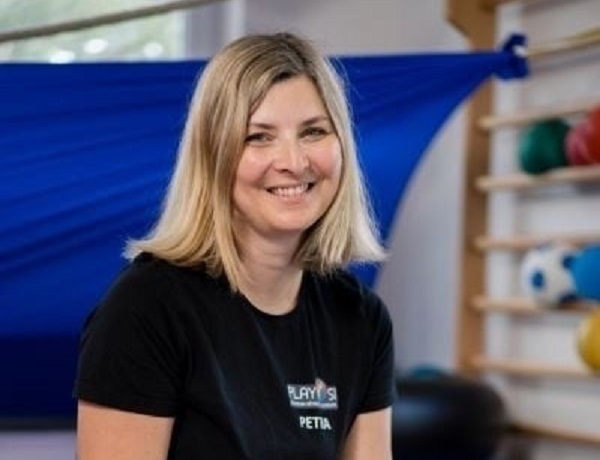
When it comes to children with ASD, it is reactivity disorders, so-called modulation. The primal stimulus attacks them, and they cannot filter it out; they cannot get rid of them, or on the other hand, they cannot understand that certain stimuli are necessary, and they do not let them to their nervus system. Therefore, we talk of deviations in reactivity. We do not talk about the disturbing perception of a sense. The whole curve of processing in the brain is long. It is not just how we process the stimulus, but we have to put it in the right box to evaluate its quality or pass it. Then we have to connect every stimulus with other perceptions, which means perceptively integrating, and only then do we keep some, we answer somehow in our behavior. In ASD children, the problem starts at the beginning of the curve. All the stimuli attack them, and they cannot differentiate the important from unimportant ones and send the unimportant ones away; we call it filtering out. It brings them trouble because their nervous system is full of insignificant perceptions, and they are overloaded. All the outside stimuli overloud their brains, and at the moment the child gets stressed out, the brain is overloaded with stress hormones, and it comes to the stress reaction and behavior.
For example, when a child sees well but minds black text on white paper, when they are supposed to read, the child freezes and cannot read anything, even though they know how to do it.
Out of sensual qualities, we work with three connected to other senses: equilibrium, body sensitivity, and touch. These senses are often forgotten even though they play the main part in our lives. All these senses can be explored and worked with. For the therapy, it is necessary to reveal the problematic region and work with it.
Can we have an example?
For example, the balance still controls your head and body position in space. It keeps us and the world in balance. It is a gyroscope of sorts that does not allow us to fall and keeps us standing. The balance organism is directly connected to eye-moving muscles, and the moment we move our head, it straightens the picture of the world around us to stay straight. When my balance organism does not work correctly, the world around me will be blurred, constantly sick, and my comfort will be disturbed. The balance organism is therefore needed to be examined. I will experiment with the rotation desk. I swing the child and count down how quickly their eyes move. Thanks to this, I can decide if eye movement is expected. Then I can decide how to lead the therapy.
I remember, when I filled in the questionnaire for my son’s diagnostic, that I was surprised by one question – if he nods his head, when he says yes, or shakes it when he says no. at that moment I realized that most of the people nod or shake their heads, but my son in his eight years does not. Is this another of the criteria?
Yes. A vestibular organism takes care of such a simple thing as a head movement in agreement or disagreement. Another everyday occurrence that influences where the differences can be seen is eating. In small children, it is the inability to bite; they do not digest the firm food, the movement of jaws can cause a lot of problems to the children. The balance organism is located in the inner ear, and when we bite, the jaws move slightly and can irritate the balance organism. Thanks to this indicator, we can find out that there is something wrong with the balance organism.
How do you therapeutically work with such a perception or imperception of the body? Because it would not be verbally, I guess.
The priority in children with ASD is to create a good relationship. So we use the method of sensory integration. It is a method including the motoric aspects and includes ten pillars of reliability and ten points that it needs to achieve to be scientifically verifiable. These points are not just about motoric, but about the child’s ability to hold head or how their balance organism works. There are also many psychotherapeutic points, such as establishing the contact not to irritate the child.
I must establish the contact first, create some relationship. When I reach the relationship, we do not work as the ABA therapy with the external rewards; we work more with the inside ones on the principle of overcoming yourself, which is a reward itself. So, when we take the child out of their comfort zone to slight discomfort, and the child overcomes it by themselves, he gets the inside reward that they made some achievement. We still work with something we call “the right appeal” – we give the child the possibility of success. It is hard work for the therapist because they work at the edge of comfort and discomfort, and they always have to retreat when the child gets to stronger distress. When you keep this line on the edge of comfort and discomfort, the child can overcome their fear of heights and climb on some taller aid and, for example, jump down. We share the happiness of success. The therapist usually works along with the child and develops mirroring in children with ASD. Or the therapist starts with showing the activities, and it stimulates their balance organism. Imagine that a child is afraid of climbing up into highs, the therapist climbs there, and the mirror neurons work. We all have them in our brains; only children with ASD are weaker. When the child sees how I use the swing, they can see they can overcome it, then try it together. At the same time, the balance organism, together with the eye moving muscles, can be simulated through watching other people, and it is a sort of roller coaster effect; I watch as someone rides it, and it makes some of us sick.
It seems like this method is based on what the parents do naturally, and at some point, the child enters a system, and this ends. It is a controversial topic. I agree with Olga Bogdashina, who says that some children with hypersensitivity really cannot visit a school. Today’s rate of hypersensitive people is at about 20%, so consider it that some 20% of children cannot be at school due to hypersensitivity. What do you think?
I think that higher sensitivity and deviations in modulation (the reactivity) limit the child’s behavior. At the point of having the brain overstressed with stress hormones, the capability of learning decreases to a basal level. They basically try to survive instead of learning new things. So, I think that it is a great method to take care, that the school would be more friendly to these children, so it would introduce smaller classes, relaxation zones, with assistants, that can help in time. On the other hand, the child should visit school and not just stay at homeschooling. A certain level of stress daily that we overcome makes us happier. So, children should be tried every day with a certain level of discomfort. But it is necessary to find the right level of stress the child can handle. It is not a good idea to put a child in an extensive and unprepared system, where they are overwhelmed and unable to function.
But there are no small systems here. And paradoxically, some neurodivergent children are overwhelmed with positive emotions when they look forward to something that is positively evaluated. It is not always children reacting to negative stimuli.
Even a positive emotion can stress the nervous system. Even the hormone of happiness can overwhelm the brain not to learn. These children have not developed the capability to filtrate the stimuli and feelings of the outside space (so-called introspection). That is why the teachers should be educated and should find out the child’s needs.
Could you describe to me how hypersensitive people end up in a large class?
We actually do not talk about sensitivity but reactivity. And it can be heightened, lowered, and fluctuating. The reactivity changes during the day; in some parts of the day, the child can have heightened reactivity, and in other parts, they are lowered and would not react to the same stimuli. That is usual in children with ASD, and that is why it is challenging to work with them because there is no way of knowing when the stimulus will be at which stage. It asks for a lot of experience to learn to discern the child’s state and understand their experience. This child is quite limited in the process of learning. In my experience, there are fewer children in one class at the practical or special school, yet still, some teachers cannot offer the child the information in the way they would understand it. Sometimes the child can accept the stimuli only in one sensual way. The child has opened the sensual communication zone, and the child does not even have to understand the educational stimuli and react to them. The learning process is always about the individual type of learning; every one of us has a different way of learning new information. Someone learns better visually, someone audibly, everybody has the process a bit different. Somebody likes movement learning, and if we managed to achieve the right way of learning, the child would be able to understand the information better, and the ability to learn would be higher. It is about the individual approach. Unfortunately, I have the experience that we cannot offer the personal approach even in special schools. I have an experience from the USA, where schools have therapists ergo in school classrooms, and they help the teacher personalize the concrete strategies for the children. In the Czech Republic, the school would not ask us to come; they may often not know that they could work with us, or some feel uncomfortable that we could actually bring some novelties they do not need. They are not used to having an ergo therapist on the team. It is a shame because the ergo therapist could help them decipher the child’s individual sensual needs and come up with some strategies for work with them, so the child would not unnecessarily fail.
If I brought you to our school, what would you recommend to them?
It is always about the individual examination of the child. I must know what type of learning is the best for the child, which I will find out thanks to the examination of sensual perception, where the reactivity is heightened and where it is lowered. When a child is highly sensitive in the balance organism, I will behave to them differently than too much less sensitive children because these insensitive children look for auto-stimulative behavior – they need much more movement, they need to jump a bit, for example, they are in constant psycho-motoric unease. That happens because the balance system constantly gives us information about our body; if the balance mechanism is weak, the perception of our body is weak as well, and that makes us anxious. Just imagine we do not know about our body, we become nothing, and that is really anxious thought, and that is why the children start to move around a lot, they give their balance organism more stimuli, and in this high level, it returns the feeling of the body. I prepare a balance sitting for that child. It is a simple strategy. The child has a balance mat or a stool. At the moment the child can move a bit while sitting, the balance organism keeps working, and the child has information about their body, which calms them. They can focus on the work, and what’s more, the behavior does not disturb the teachers or other people in the class.
So, this easy it is – you do not need many aids, just a balance mat. So schools are too scared…
We are definitely not interested in creating strategies that would interrupt the school process. We look for a way to allow the children to satisfy their needs of auto-stimulation and a way it does not disturb the class and the teachers in their work. So, we are looking for small things that can make a great difference.
When I get back to the senses, we speak of basic five…
In the method of sensory integration, we speak of senses differently. However, we speak of the basic three senses – the balance system and feeling your own body and touch.
You have said something you do not often hear – you speak about the smell, vision, hearing, taste, and touch. So, touch is the only way you connect?
When you look at the child’s development, already in the womb, you have these three senses – the balance system, the feeling of your body, and touch. The others follow, but these three are the important ones that help us understand other senses. The vision develops in the first half-year of the child’s life. It does not work until childbirth, but the balance system is fully developed in the eleventh week of pregnancy, and the child simulates it by moving in the womb. So, we have to talk about the three basic senses and the others that follow suit. For example, the sense of smell starts working in the womb. These are often forgotten senses, although they are very important in child development. At the same time, when the child develops, it is on the basis of unconditioned reflexes, that in time develop the ability of motoric and academics learning.
New methods such as mindfulness are getting back to the fact that no verbal therapies make sense when you are not by yourself or your body. You will not be alight until you feel the way you feel inside your body.
Exactly. For emotional regulation or our emotions, finding our bodies is the basic issue. If `I have a problem in the balance organism, I will feel bad mentally. The balance organism is connected to our mental health, and not just with autism but also with other mental health issues. The balance organism communicates with the feeling of our body. I have said that there is a neural path for connection between balance organism and eye-moving muscles; there is also another path for creating the right tension in our body. For example, when I enter a boat, some of my muscles will tense in order not to fall down; those are balance reactions everybody knows. They work all the time if our balance organism is alright; as soon as I tilt the head, some muscle groups will toughen, react, and that is the result of the workings of the balance organism. It creates the right tension in our body to keep us upright and not falling. And our feeling of the body depends on inborn tension that keeps the skeleton; it is muscle strength. It is all about strength… when we carry a heavy shopping bag or close our fists, we will feel our bodies more than when we lay them on the table. It must be said that to calm ourselves down; we must learn to feel our bodies. When a baby is born, it uses during the first six months so-called “fidgety movements.” These are small movements that stimulate the child to know about its own body, these movements entertain it because it cannot reach for a toy yet, but it trains the feeling of our own body. The surface of our own body is positioned higher than the motoric; to move purposefully, I need to know about my own body.
Now that I listened to you, I imagined that at first, we all applaud the child for moving their hands, fingers, then they raise their head, they can fly like a plane, they can move on four, then they stand on two… and then from some age, they must not move much because it interferes. We put him in school and had to sit and not move for five years a week for many years. We all cut ourselves off from the perception of the body – it teaches us to sit straight, not to move our hands, to stand like a candle when singing, and if it is otherwise, even punishments come. I saw a video on Youtube for sensory integration. The second-class boy says he’s really upset that the teacher forbids him to swing in his chair, but he can’t concentrate on what the teacher says when she can’t move. So we all cut ourselves off our bodies, and I wonder how you then teach the elderly who are having trouble getting this cut off from their bodies.
We try to get them back on track to realize they are doing well and lead them back. There is the greatest interconnection of all sense qualities in that sensory perception between the sixth and twelfth years. Within six years, we gather an awful lot of information in all our sensory qualities, the brain has it stored there, and between the ages of six and twelve, it is the period when we can make the most connections. And the moment the child has to start connecting like this, he will sit down at the school, where he must not move. Well-tuned to support the sensory process are educational systems such as Montessori education, the Waldorf school – it has the so-called Eurytmie, linking harmonious movement with learning. These systems understood the need for the child to move in some way. We try to return school-age children to that movement and develop strategies based on their natural need for what kind of movement they like. We often give them a hammock to relax at home, so that when they come home from school, instead of sitting on a seat and sitting again, they relax otherwise, for example, in a rocking chair, on a balloon, so that the balance system permanently receives regular stimulation, which will benefit their perception of their own body. From the certainty of knowing their own body, our hopes for calming the nervous system, which is often tired and overwhelmed by the school environment, grow.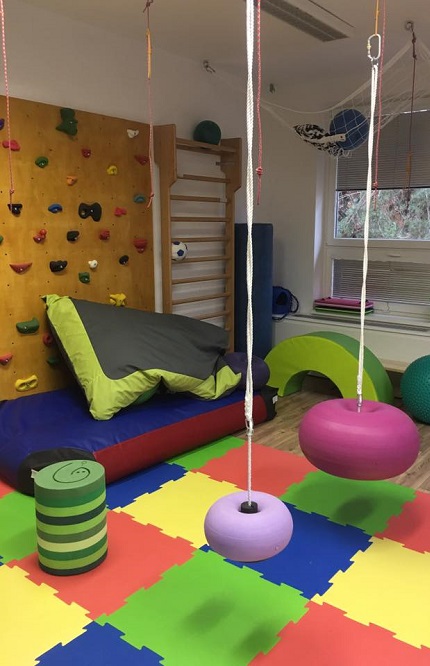
We work mostly with children under the age of six on occupational therapy, but recently the age of the children who come to us has been increasing. We feel the need to offer something for them as well, so we have open group exercises for older children under the age of twelve. But even older children are appearing, so we are expanding our reach to these age groups as well. However, the capacity of our facility is not inflatable, and we would like to find a facility for adolescents that could follow us.
And is it possible to regain the perception of your body at an older age?
By the age of twelve, sensory pathways are very open, so you can work hardest and influence the whole sensory process. Recently, however, work has begun on sensory integration in adults as well. Abroad, sensory integration rooms are being set up in adult psychiatric wards so that the journey and approach can definitely be lifelong. At a time when you have difficulty with a balance system, it is never too late to try to start, you can work with it in adulthood, and even there, these strategies work. In adults suffering from reduced perception in the balance system, we may also encounter in adulthood, for example, the fear of open or closed space; they may have difficulty in self-organization because their Spatio-temporal ideas are disturbed. During their therapy, we then try to find some type of movement that will suit them to affect their balance system and thus achieve calm again.
I learned the most from adult autistic people about what happens when they react to stimuli. They also describe well the strategies they are looking for to be able to prevent or get overloaded because the experts here will not give them much advice. Do you need to contact them?
Indeed, we haven’t done it yet, but it seems like a good stimulus. We are starting to have information from those older children. Around the twelfth year, they can describe their feelings to us. It has enriched us a lot because we often learn interesting ideas, especially for children who are picky about food. So if they are able to describe from a certain age what bothered them, that they may be bothered by olfactory sensations, which is often forgotten, then I must say that it is a huge experience for us and it enriches us a lot in the subsequent work with those small children.
How would you explain to adult autistic people who often say in the forums that when they have tension, they have to bite into something, why they need it, and what advice would you give them?
I think they have a great need for self-stimulation in the jaw joint, when the moment you press the jaw joints, in a way, you connect to that balanced system. It’s a strategy for creating a vacuum in the inner ear. I have experience with younger children that, for example, children who go to the first grade and then have to sit there start to self-stimulate their jaws, they even start to throw their jaws out because they have an increased need for some stimulation, and they are at the moment staring. I would definitely advise different teethers: there are different pencil tips, such as rubber ones, that such a person can bite to release his inner tension. I would certainly let this need flow naturally. Commonly available foods can also be used, chewing gum is an excellent strategy, gummy bears, harder foods are recommended, carrots, if it is not a picky diner who does not tolerate these things, crunchy snacks. I think that such inconspicuous strategies could be found more in adults.
Is it possible to prevent this? So that they don’t have to have a toothpick, if it is possible to influence the body in some other way, because the toothpick is already visible and not always allowed at school, or teachers curse him for it when he bites a pencil and so on…
If the child has this need, then I think it’s better to put an inconspicuous pencil tip, no one needs to know – now we’re not talking about those dinosaur-type bits that hang on my neck, there are also manager tips, because it’s not just For people with PAS, it has a lot of people needing to press their jaws under stress, so there are then less prominent strategies. I can imagine some physical activity, but it is always individual.
Many people who are anxious or more stressed by various stimuli have trapezoids withdrawn, have headaches because they have the entire upper torso withdrawn, and it is good to prevent this with various strategies because they often end up with pain in doctors’ surgeries.
Who only gives them medicine. Do you also teach strategies to prevent this?Usually it's good to know which sensations stress me. For example, if the light from the monitor bothers me, I will use screen savers, I will use glasses with a filter, for example. I can use soundproofing panels when I have an increased response to auditory stimuli, earplugs or listening to music when I am in an office where there is noise. I understand that it is not possible at school, but those adults can already set up such procedures, and I think that it is always based on the needs of the individual. It is good for people to start thinking about their reactions, to focus on their bodies, to be attentive to each other. As hectic times are, we sometimes forget to think about ourselves; it is necessary to pay attention to ourselves and our reactions. At the same time, I would not like to promise that we will completely eliminate all reactions; rather, I would talk about the possibilities of suppressing undesirable perceptions or at the same time increasing the supply of pleasant stimuli to us. It is such a compensatory approach, I will not change the situation, but I will find a helper who will help me overcome any anxiety. There, anxiety-reducing subjects, so-called fidgety toys, are used in schools, which are tailor-made for a specific person. Some people choose different crushing toys to release the tension in their hands. But there are also people who love an interesting tactile sensation that will release the rising tension. I like tactile zone pencils, for example, from Faber Castell, the pencil has such rubber tongs that you can ride your finger beautifully, and the moment I'm nervous and maybe I'm lecturing somewhere, I can only say that I run through the tactile zone, soothe my tension and focus more on what I mean.
It is quite strange that this has been known for decades, but somehow it has not penetrated the field, but not much among psychologists and therapists. So they forbid it in education; we’re cut off from the body for about twelve years, and then we get out of it into adulthood, and they all go to therapies where they are taught to return to stimming. Do you go to school to train, for example?
We had a cooperation with four schools in Prague. Unfortunately, because of covid, they didn’t let us into those schools anymore. The only school remaining is Parklane School, which is very inclined to have an occupational therapist work there. It is also because they are partly a foreign school, so they are very close to the model of cooperation with an occupational therapist. At the same time, I made a great effort to train pedagogical staff under the National Institute of Education, and it was canceled at some point, so we trained one lecture for people from pedagogical counseling centers, but they were most interested in how to write a report about the child, and it’s too much. They were not interested in what supportive strategies to offer the child, which I think is a great pity. I would very much like to cooperate and pass on experience in the field of school strategies based on the sensory integration approach, but I do not see any feedback from pedagogical institutions at all.
You mentioned that schools often resist your help. Are the teachers themselves interested?
I have been working for many years in Motol on pediatric occupational therapy. When I have clients, I invite their assistants. I try to teach individually those assistants who go through some educational rounds, but no one will teach them to work specifically with a particular child. So we always try to invite assistants to our clients, and I have an experience that where the assistant really comes, it works very well. We are a medical facility in Motol, and we can’t leave work and go train someone for school, so we need an assistant to come to us, but there are many schools where the assistants don’t even let go of such a consultation. They say they know everything and are not interested. Before the covid began, we sent an awful lot of kindergartens and schools in Prague, we offered them cooperation, but the interest was very small.
Perhaps it would be better to connect with the faculties of education and then the centers that train the teaching assistants and train within their compulsory courses. I have feedback from people who have taken courses on the teaching assistant that it’s just a theory. They are not trained in various handicaps in children; they have not even heard of sensory integration in the course.
It’s a fight with windmills. As long as I’ve been doing this, I feel like it’s still at a standstill. I have the experience that even special education centers often say why an occupational therapist gets involved when they know better, write a message, reduce curriculum, but do not take a sensory approach and do not offer children appropriate support measures based on the sensory basis. We don’t do this in order to steal someone’s position in education. We do this because our clients are important to us, and we want to provide them with a quality life and the opportunity to be successful at school and subsequently in life.
If at least 20% of children are highly sensitive, then it is not enough. This is a quarter of a class, and there are certainly others who need help; they are not highly sensitive, but they may have had a poor birth or an uneven psychomotor development.
This does not only apply to children with sensory abnormalities but there are also children with cerebral palsy or other physical disabilities in regular classes; we just want to show the needs of such a child, for example, specifically how a child with DMO should position itself correctly at school, which is essential for its functioning and we are not invited to do so at all.

I also wondered why the therapist didn’t do it, why the occupational therapist did it. I had completely different ideas about this profession.
Abroad, occupational therapy is very developed, and there are many occupational therapists. In those countries west of us, occupational therapy has a long-standing position and has built its place in a system where everyone cooperates in the child’s best interests. Here I sometimes feel that the institutions are fighting each other, which is more important for the child, but mutual communication is missing. An occupational therapist has a place in the child care system. An occupational therapist is a profession that has to blend therapeutic procedures into everyday life; our goal is to improve the quality of life of our clients, but really in the sense of everyday life, to improve their daily life. It is said that a physiotherapist will warm your legs and an occupational therapist will teach you to dance, I think that is a good comparison for understanding our field.
At 18 months, early detection is made if the child’s development deviates. I haven’t heard of someone being seen by an occupational therapist. For example, a pediatrician told me that she didn’t even know where to send the child when she realized that the development was uneven. It is recommended to go to a specialist with a child: a psychiatrist, a neurologist, so why isn’t there an occupational therapist when sensory perception is so important? Is this a fight against you?
I don’t know why the fight is, I don’t know why it started, because we should belong to the childcare system, but somewhere someone completely forgot about us. It is true that during the years of communism, occupational therapy did not develop much here, so her position was not consolidated here. I was one of the first to graduate in occupational therapy at university, and that was in 1996. Since I have been working in this field, we all have tried to promote this field, including the Czech Association of Occupational Therapists. So I don’t see for myself why other therapeutic positions are being considered that are now being considered, such as a neurodevelopmental therapist, when there is a specialty that belongs to this system worldwide. Studies commonly state that it makes sense for an occupational therapist to work with a child, not to be neglected. I do not know if there is any legislative struggle in our republic. The problem is that there are so few of us that we pay attention to our clients and do not have time to fight for our field and for systemic child care through occupational therapy.
I have a feeling that we are always different in the Czech Republic in the field of autism. But not everyone, just someone. Olga Bogdashina says that no behavioral methods are worthwhile if the child is not worked through the senses, through sensory integration. Here we will argue whether it is SI evidence-based, and those children are completely eluding us.
It occurs to me that there is a struggle at the expense of the children that I do not want to be a part of. I’m not too fond of it because my life mission is to help children, but then I see that we come across such completely useless statements that you don’t know why they were said, you don’t know what’s behind it, and it’s at the expense of those children. Therefore, I decided not to solve this case anymore and not to seek redress in public space; I understood that I was just wasting time that could be used for the benefit of our clients.
There are children here who have not been worked on at all. No one told them, “It’s okay to bite into that bitch when you feel tense.” parents. However, this led to self-harm, for example, when they did not work with their sensors. If there are 200,000 or more autistic people, so many people haven’t worked properly.
It’s a real pity, because I have to say that the biggest experience for me was the American certified sensory integration course when I saw the lecturers working live with a child with PAS, and I have to say that even me, who had already read about the method. And I practiced it for many years, so it showed me a completely different dimension of working with that child. So it’s a shame SI isn’t accepted here. On the other hand, we already have a contract with American lecturers for a course in the Czech Republic, so people with PAS can look forward to more therapists here in the future.
It would also be interesting to have an online conference for the public so that we parents know how sensory integration helps, and we initiated that we want it. Because I didn’t know it at all, so how could I want an occupational therapist who knows SI when I had no idea it existed. Experts only advised us on CBT or medication.
I’ll follow up on what you’re saying. For me, after the years of work I have been promoting, the interest from my parents is gratifying. I have only been working for one day at child rehabilitation in Motol, where the main approach was Vojta’s method, which was carried out, which for children with neurodevelopmental disabilities is not entirely an approach that would move them somewhere, and I am very happy for colleagues and doctors who the time I worked there, they improved a lot in how to indicate sensory difficulties and sensory integration. And they are now very active in supporting this method, for which I thank my enlightened colleagues immensely. (Editor’s note. You will find warning signs on the SI Association website, thanks to which you can find out that the work of an occupational therapist trained in the Sensory Integration method could help your child.)
What is the difference between snoezelen, which is now very popular, and your work using SI?
Snoezelen is rather a concept where the child is in a sensory room, where certain combinations of lights put the brain in alpha waves and calm it. The work there is not entirely on sensory challenges. In our sensor room, the environment is always variable, always safe. Our room is also changing. We change the types of swings, the places of aids so that the brain has to adapt to change. We work a lot with the challenge that a child will overcome an obstacle, and with the relationship that we are partners, there is never a therapist above the child. It is not a directive method, we rather connect with each other, but the child should always achieve a goal and enjoy it. There is still a need to distinguish – sensory integration therapy is what I have described now. Then there are techniques that use sensory means and sensory opportunities. It is then that I go to school and come up with a great session, aids to reduce anxiety, I work on his emotional setting, and these are the overlaps at home. This is the occupational therapy that ensures his quality of everyday life in the school environment.
I also wanted to ask if, for example, an older child comes and is already really devastated from school (although by coming to you, it will probably be better), what will happen to this boy or girl when you change their environment, and they have the challenge, they will relax on the swing, for example, what therapeutic process do you see there?
It is always very nice for us to see that the child has found an environment in which they have confidence. This is very important for us because these children are usually no longer distrustful of all the professionals they go to because most of the time, no one has helped them much. They are already anxious that they are going somewhere again, and the moment the child starts to swing, we have such sails, it gets into it. It feels good there, and in fact, it is suddenly able to open up to us a bit, so at that moment, I felt very happy that the child has confidence in us.
And how does it open?
Maybe he’ll say what’s bothering him. Or a non-verbal child suddenly at least looks at us or takes an object from us. I am a great friend of small things, even a small thing can be very important for this child, and the fact that we touch each other’s hands, for example, can mean a lot.
I have it anyway, but we are probably different from most people, that in these children one considers a small thing to be a miracle, a huge result. So that he is not pushing for any more performances, but he is glad that the child is happy now.
Recently, the mother of one of our clients, with whom we have been working for a long time, older, sent us a video of him climbing somewhere on a climbing wall. And he is a child who was afraid of height. For us, this is too much, such ordinary things that a normal parent does not perceive as something special, so it will make me very happy as a therapist. Or my parents send us videos of how the child has learned to ride a bike, has learned to spend time in the usual way, and the family can thus become part of the general population, so it seems to me the most.
And when you think of an event with a child that pleased you the most?
I have, for example, one client who did not want to go out at all; he was terribly afraid of large spaces, he only rode outside in a pram covered by a booth, and one summer, we had an intensive program. He went to occupational therapy every day, and gradually, we started going to the field and playing football together. And that came as a great success to me. That made me happy. I am grateful every day for my work to be a part of such little miracles.
___________ Interview by Dagmar Edith Holá / Photo - Playsi and Mgr. Petra Dvořáková / Trranslation by Mgr. Kateřina Šturmová Projekt je realizován s finanční podporou hlavního města Prahy. The project is implemented with the financial support of the capital city of Prague.